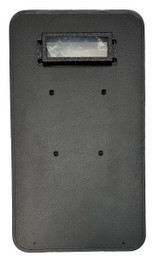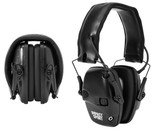This Is How Body Armor Is Tested and Why You Should Know That Before You Buy One
This Is How Body Armor Is Tested and Why You Should Know That Before You Buy One
Ballistic body armor is a purchase you want to make only when you’re 100% sure about it. Any doubts in its efficiency are intolerable: after all, your life and well-being depends on it. Choosing the right body armor requires understanding of how exactly each armor class is tested and certified, so you could select the best relevant option according to your specific tasks.
So, how is the body armor tested? Read along!
What is body armor
The National Institute of Justice defines body armor as a special type of protective clothes and apparel including vests, helmets, armor plates and others. Ballistic resistant armor is designed to minimize risks of being injured by a ballistic projectile hit.
In order to guarantee some minimum standard protection, NIJ certifies armors based on particular tests against standardized types of threats.
It is worth mentioning explicitly that there is no such thing as bullet-proof armor. Every armor has its range of applications and is certified against certain threats only. Hence the name - bullet or ballistic resistant armor. It provides some minimum guaranteed protection against specific ammo types, but does not offer 100% defense against all and every firearms.
Why test body armor and what is a threat level
With the wide abundance of body armor plates and bullet resistant vests on the market, it is vitally important to give potential users of body armor a bit of understanding of what their armor is capable of stopping, and how effective it really is in comparison to other pieces.
So, NIJ developed a unified standard to compare body armors with each other in terms of their protective capabilities, and to test these armors against standard threat levels. The NIJ certification basically provides an answer to the following question: if I buy THIS body armor, will it be able to defend me against THESE types of threats.
So, what are threat levels? The NIJ sorts all body armor into four threat levels they can withstand against. The levels are:
- Level II
- Level IIIA
- Level III
- Level IV
Previously, there were also NIJ Level I and NIJ Level IIA, but now they are abandoned because there is simply no practical use of them today. We’ll explain each threat level below in more details. But for now, you should understand that body armor with a higher protection rating, for instance Level IV against Level III, does not naively mean that the armor with a higher NIJ rating is better. This is not as straightforward as one may think. More on that in a minute.
NIJ body armor certifications and testing protocols
The NIJ Standard-0101.06 sets the following threat levels and testing protocols for ballistic armor.
NIJ Level II body armor
The NIJ Type II body armor is tested against 9mm FMJ RN, .40 S&W, .357 Magnum. Specifically, the armor should withstand shots of bullets with a velocity of 398 m/s (9 mm, .40SW) or 436 m/s (.357 Magnum).
Level II armor is often called soft armor because it is made of woven synthetic fibers such as Kevlar or Aramid. The main advantage of soft body armor is low weight and high flexibility, which combined make the Level II armor a perfect choice for law enforcement officers who only need basic ballistic protection against common handguns circulating among criminals.
NIJ Level IIIA body armor
The NIJ Type IIIA offers certified protection against .357 SIG FMJ Flat Nose (FN) bullets that were shot with a maximum velocity of 448 m/s and against .44 Magnum that have a velocity of 436 m/s.
This type of armor is efficient against almost all pistols a law enforcement officer can face on the streets. At the same time, Level IIIA armor is lightweight enough to provide this protection without sacrificing mobility and speed of the wearer. It’s still a soft armor, but harder Level IIIA armor plates are also not uncommon.
NIJ Level III body armor
Now, this is the first example of the hard body armor group. Type III armors are designed to stop and are tested against rifle shots with 7.62 FMJ ammo at a maximum velocity of 847 m/s. Note that even though there are soft and flexible Level III armor plates, they are tested the same way as their hard counterparts.
Note that the velocity of a projectile matters a lot. For instance, a lower velocity bullet (say, 5.56 caliber) can sometimes pose serious problems for a typical NIJ Type III certified body armor. This is why some manufacturers use their in-house certificates to guarantee their armor plates can stop such “non-standard” bullets too. This super-standard is commonly indicated as Level III+, and means that the armor was tested by the manufacturer against some additional types of threats, i.e. M193, M855 “Green tip” and alike. But you should keep in mind that manufacturer’s standards may differ from each other, so you better contact the manufacturer to clarify the details of the protection provided. Also, technically, such armor plates are still certified and sold as NIJ Level III standard for all potential legal purposes.
NIJ Level IV body armor
The hard armor or body armor insert Level IV are tested against high-velocity shots from armor piercing or sniper rifles: .30 AP bullets at a velocity of 878 m/s.
Level IV armor is typically hard, but there are few flexible soft armors. The above statement about importance velocity is also applicable here. For example, a ceramic Type IV armor plate can save your life after a .30 AP shot, but is much less likely to withstand a round of 7.62 shots.
Testing protocols
Laboratory testing of body armor involves picking a number of samples for each test threat. Then, each sample is shot with an assigned threat, and the results are measured. For example, certification of Level III armor plates requires nine testing plate samples large enough to be shot at least six times each panel. Every provided sample must withstand the threat.
How to choose the right body armor
The process of selecting the optimal body armor involves the following steps:
- Determining the threat level
- Selecting the armor type
- Measuring yourself
- Selecting a material
- Selecting a preferable cut
Let’s take a closer look at each step.
Determining the potential threat level
Choosing the right body armor starts with assessing risks and potential threats you may face during your job or outventure. A high risk of gunfire means you need some serious protection. On the other hand, if you do not expect dangers, but only want to make sure everything goes on as expected, you probably should not select a hard armor set that will slow you down and limit your capabilities.
Selecting the armor type
Once you understand what kind of protection you need, it is time to select a particular armor type (see above). Make sure you clearly understand differences between hard and soft armors, and various levels of NIJ protection.
Measuring yourself
Body armor is as good as it fits your body. Picking the right size of the body armor is crucial. Too small armor means some vital organs will be underprotected. Too large armor will unnecessarily limit your mobility and may even pull aside when you turn or crouch leaving parts of your body undefended.
Here are two rules of thumb you can use to quickly determine the size of the body armor plate:
- The width is the distance between your nipples.
- The height is the distance between your suprasternal notch and the point two fingers above your belly button.
In case of any doubts, do not hesitate to contact your armor store consultant. For example, at BattleSteel.com we always help our customers to select the right body armor size and assist with tape-measuring.
Selecting a material of the armor
There are a lot of options today: synthetic fibers, polyethylene, ceramic, steel, polycarbonate, and even composite armors made of a combination of the above materials for extra safety. Make sure to read about contemporary body armor materials in our blog, or contact us directly, before making your choice. Each material has its pros and cons, so getting to know about them before you actually buy anything is good advice.
Selecting a preferable cut
Finally, body armor plates have different cuts. Some of them have a simple rectangular cut providing maximum coverage of your body. Others have more or less aggressive cuts to allow for better mobility for the price of somewhat decreased protection. Depending on your activity and threats you will respond to, some panel cuts are preferable than others.
Conclusion
Understanding the basic principles of armor testing is key knowledge you need before you buy a piece. When you are informed, you pick your armor set based on a particular NIJ standard and with a clear understanding of what you need in the end. Otherwise, you are prone to cognitive biases, and may even buy an armor based not on its true value, but on marketing, visual appearance, or unverified anonymous testimonials. Do not make such a mistake - learn more about body armor from BattleSteel®️ consultants, we are ready to help you pick the best possible option for you!
Recent Posts
-
Understanding Ballistic Shield Ratings and Their Applications
The Trusted Name in Tactical Defense - BattleSteel® When it comes to protecting those who protect us …2025-04-19 -
The Importance of Hearing Protection in Tactical Environments
The Legacy of BattleSteel® BattleSteel® is a trusted name in the world of tactical defense equipment …2025-04-14 -
How to Properly Fit and Wear a Plate Carrier
About BattleSteel and Their Mission BattleSteel is a trusted name in the tactical gear industry, ren …2025-04-11


